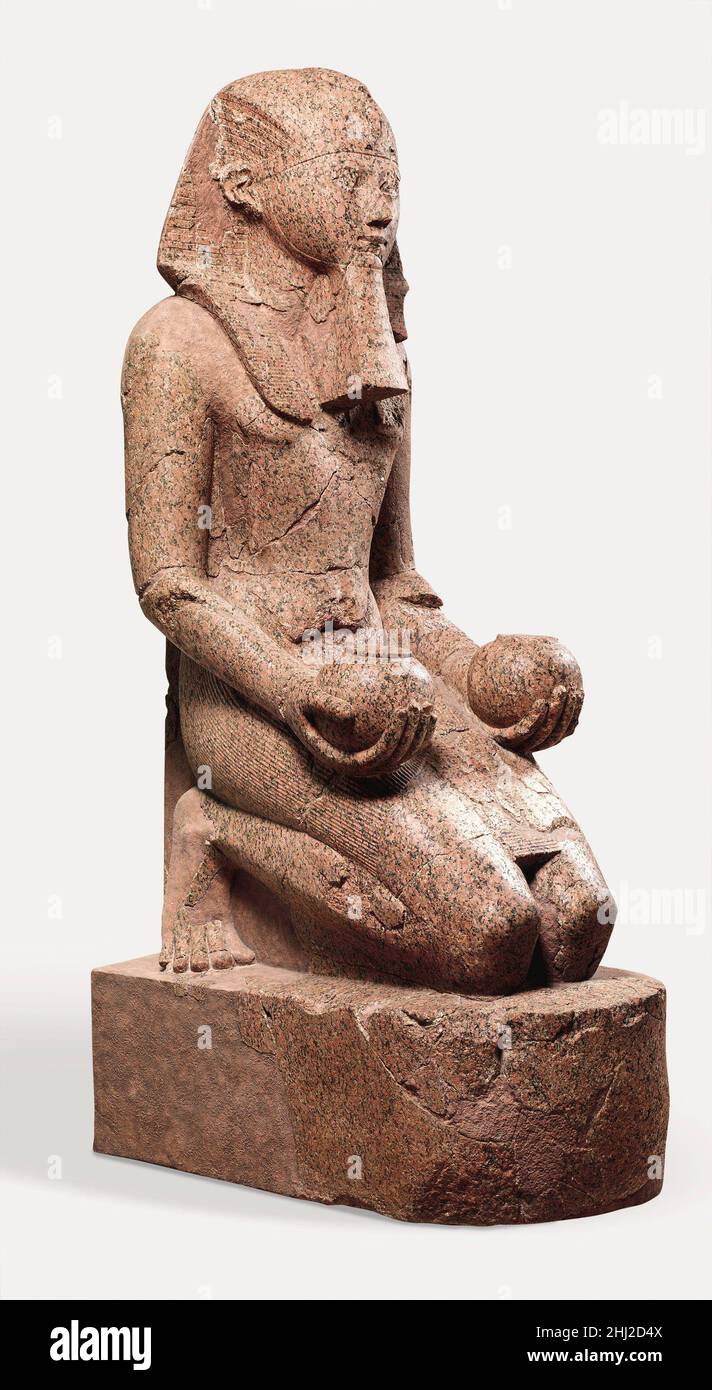Large Kneeling Statue of Hatshepsut ca. 1479–1458 B.C. New Kingdom On the upper terrace of Hatshepsut's temple at Deir el-Bahri, the central sanctuary was dedicated to the god Amun-Re, whose principal place of worship was Karnak temple, located across the Nile, on the east bank of the river. During a yearly festival, called the Beautiful Feast of the Valley, the god's image was transported across the river to the west bank. Carrying the god in his sacred barque, the festival procession followed a roadway lined with sphinxes that led to Hatshepsut’s temple. On the middle terrace, the pathway wa

Image details
Contributor:
MET/BOT / Alamy Stock PhotoImage ID:
2HJ2D4XFile size:
13.3 MB (906.4 KB Compressed download)Releases:
Model - no | Property - noDo I need a release?Dimensions:
1598 x 2916 px | 13.5 x 24.7 cm | 5.3 x 9.7 inches | 300dpiDate taken:
22 January 2022More information:
This image is a public domain image, which means either that copyright has expired in the image or the copyright holder has waived their copyright. Alamy charges you a fee for access to the high resolution copy of the image.
This image could have imperfections as it’s either historical or reportage.
Large Kneeling Statue of Hatshepsut ca. 1479–1458 B.C. New Kingdom On the upper terrace of Hatshepsut's temple at Deir el-Bahri, the central sanctuary was dedicated to the god Amun-Re, whose principal place of worship was Karnak temple, located across the Nile, on the east bank of the river. During a yearly festival, called the Beautiful Feast of the Valley, the god's image was transported across the river to the west bank. Carrying the god in his sacred barque, the festival procession followed a roadway lined with sphinxes that led to Hatshepsut’s temple. On the middle terrace, the pathway was flanked by colossal kneeling statues that represented Hatshepsut as the ideal Egyptian king - a young man in the prime of life. Some of the statues were depicted wearing the white crown of Upper Egypt (30.3.1). Others, like this one and 30.3.2, wear the nemes-headcloth. Hatshepsut also wears the false beard and shendyt-kilt that are part of the regalia of a king. Looking at the side of her face it's possible to see the strap that holds this false beard in place (fig. 1). The inscription on this statue indicates that Hatshepsut is offering Amun Maat (translated as order, truth, or justice). By making this offering, Hatshepsut affirms that Maat is the guiding principal of her reign. The fragments of these statues were discovered during several seasons of excavations by the Museum’s Egyptian Expedition. The statues were reassembled as much as possible in the field (see attached photographs). In the division of finds, the most complete examples were sent to the Egyptian Museum in Cairo. Fragments of the statues given to the Metropolitan Museum were reconstructed in New York by attaching them to metal armatures and filling in the gaps with plaster (Figs. 2–4). Although the plaster has been tinted to blend with the stone, it is possible to distinguish the original stone fragments from the plaster fill.. Large Kneeling Statue of Hatshepsut. ca. 1479–1458 B.C.. Granite. New